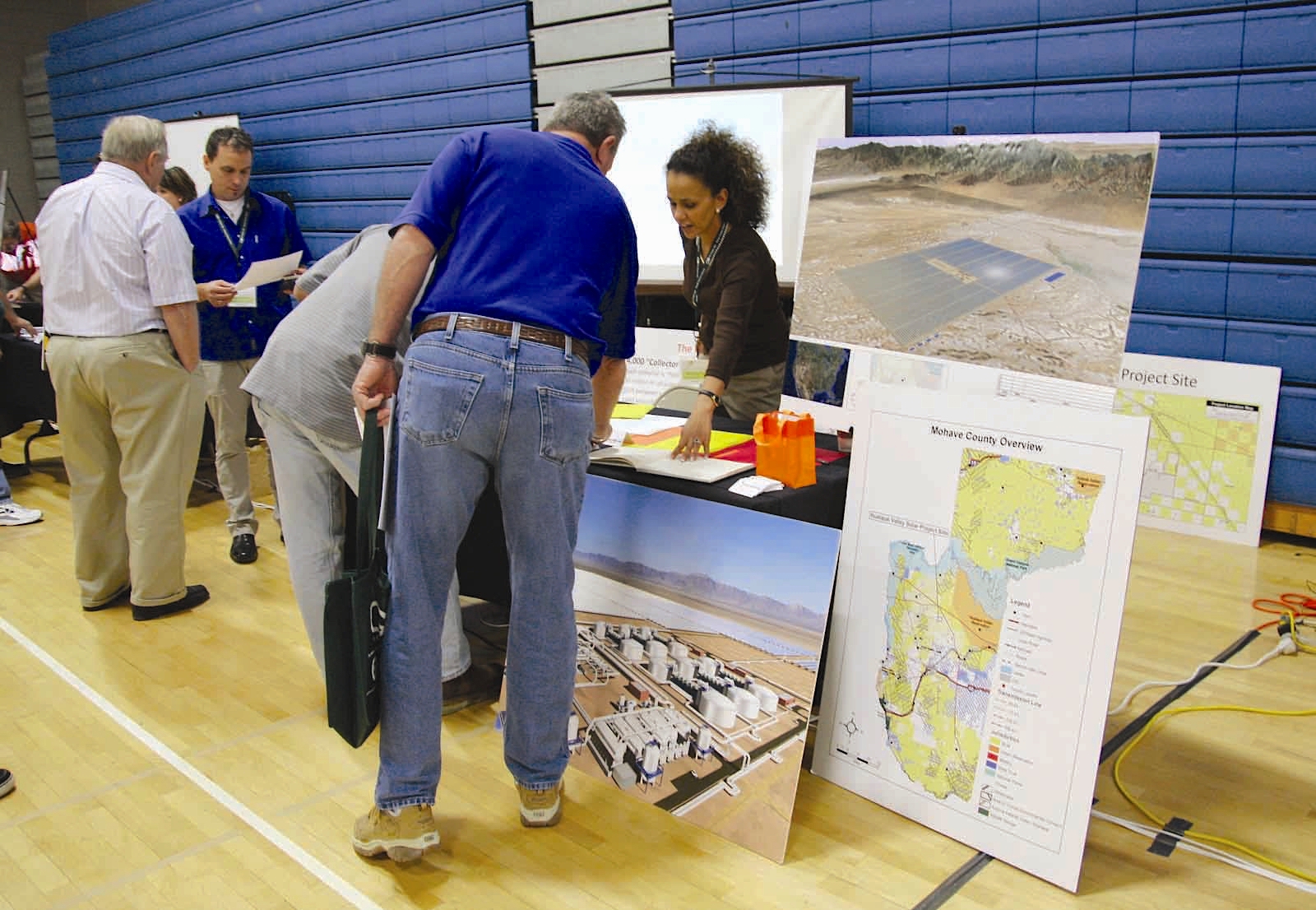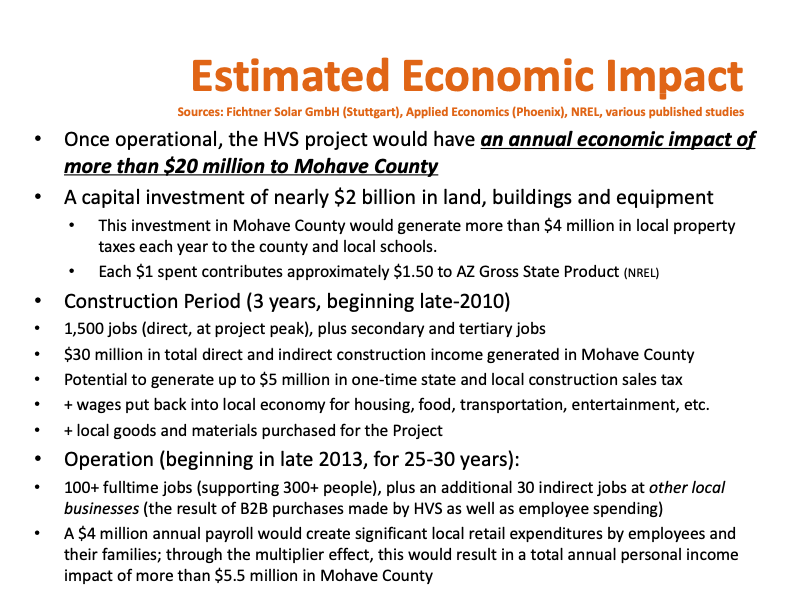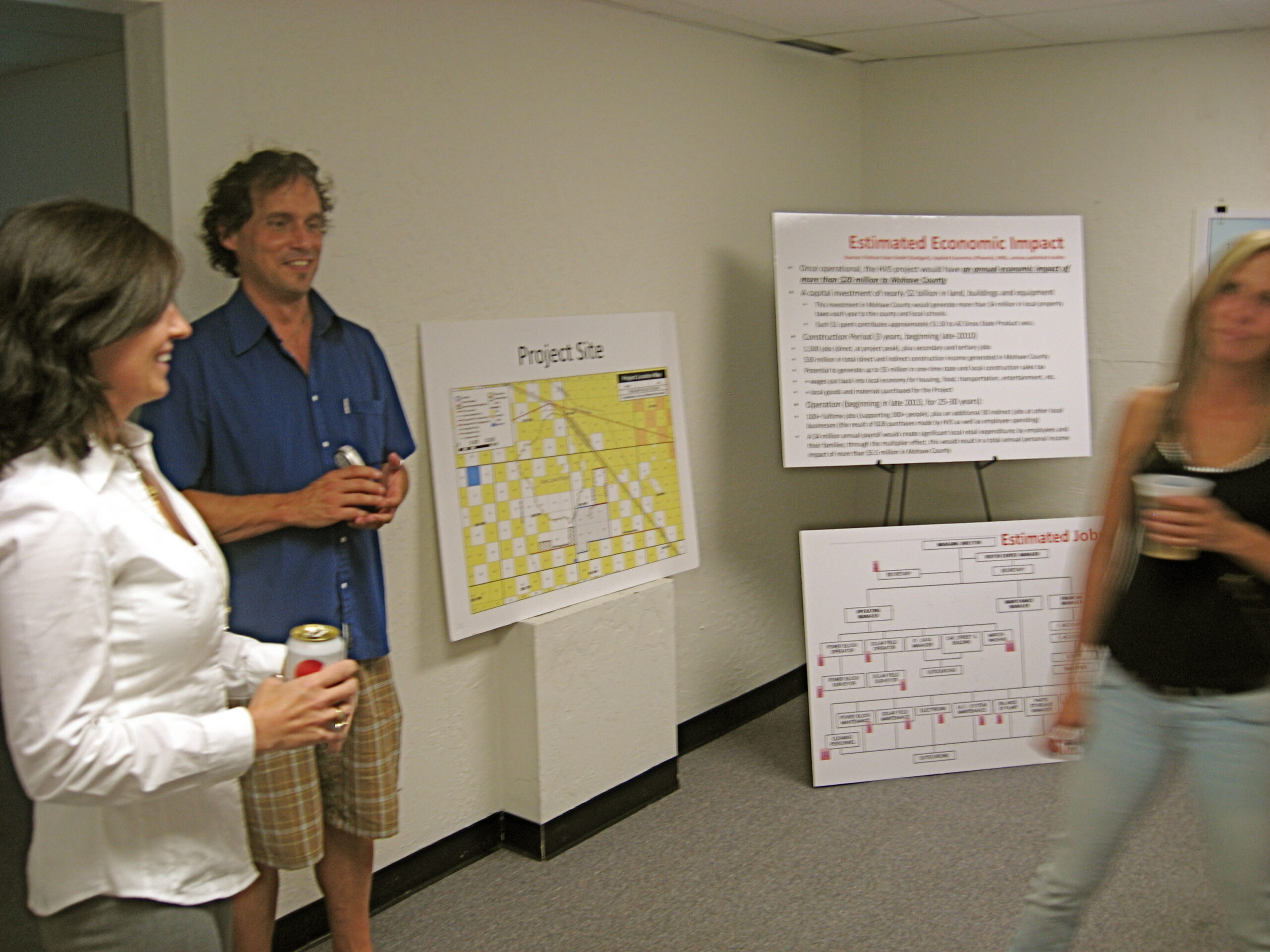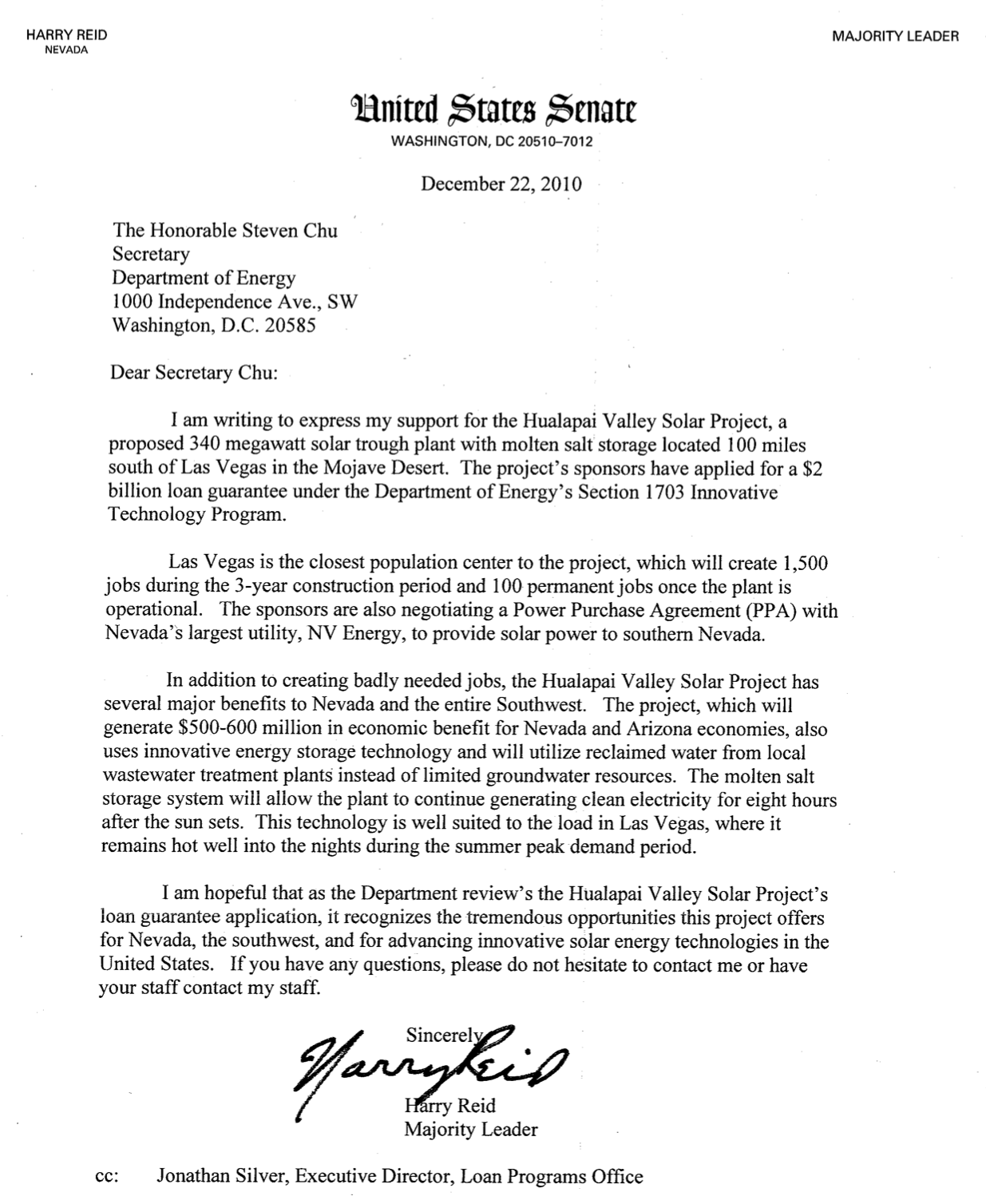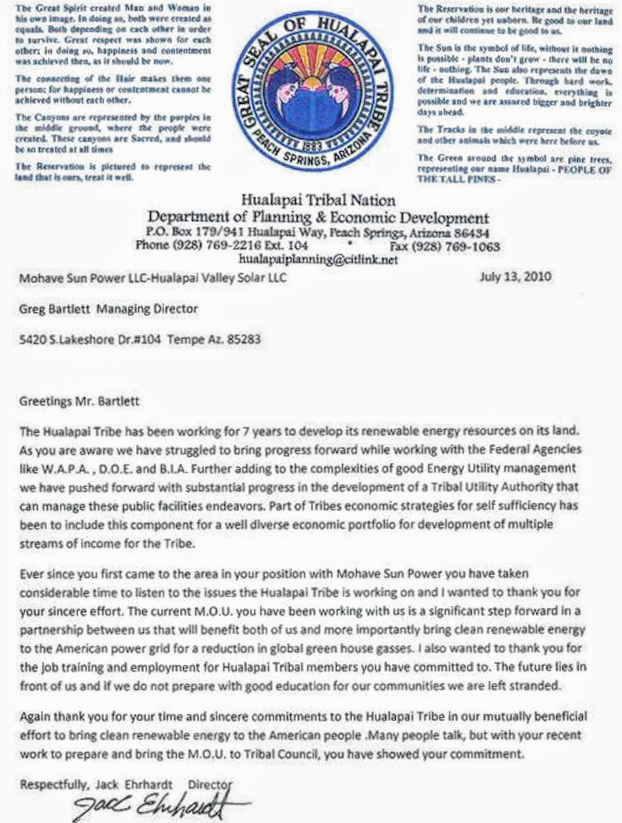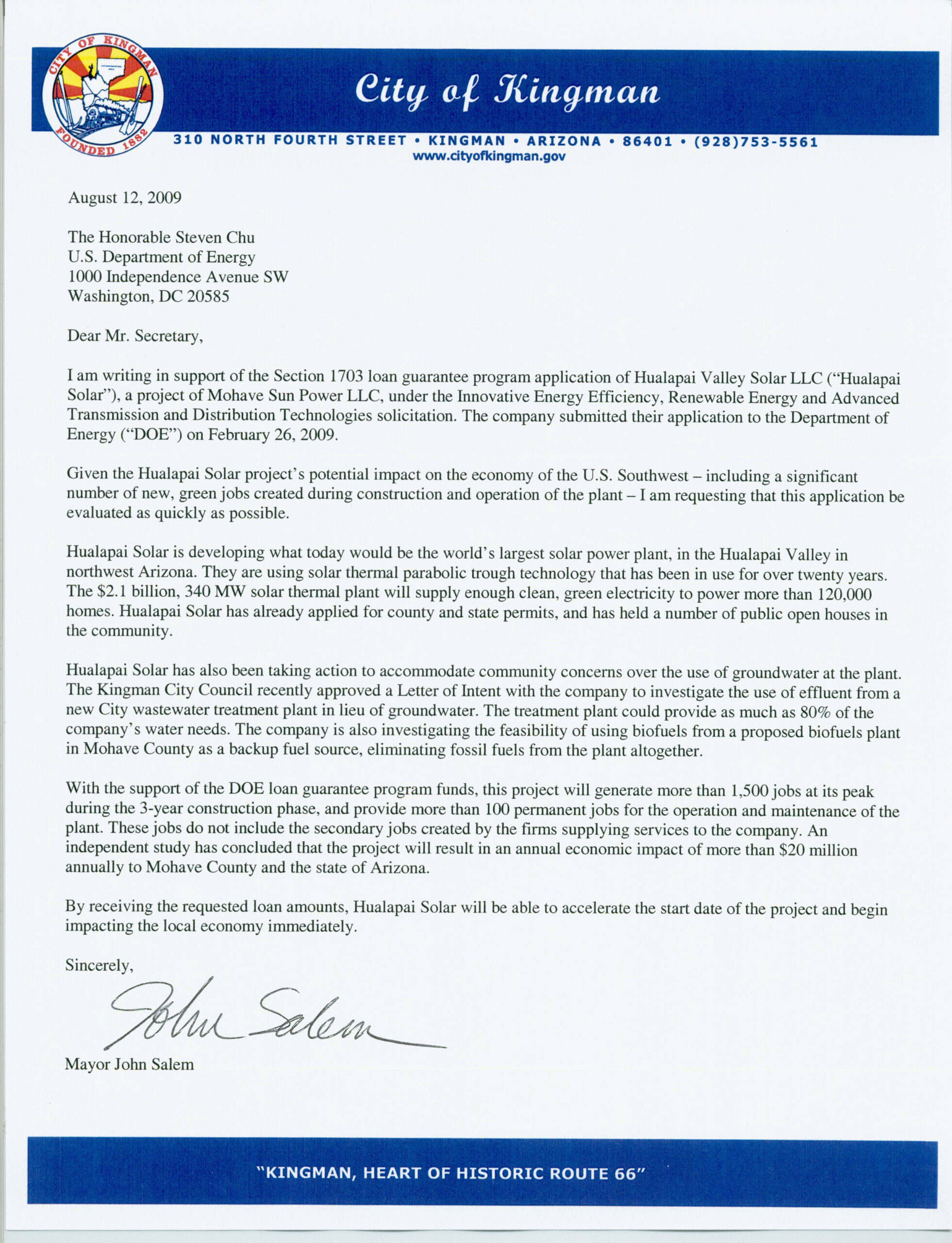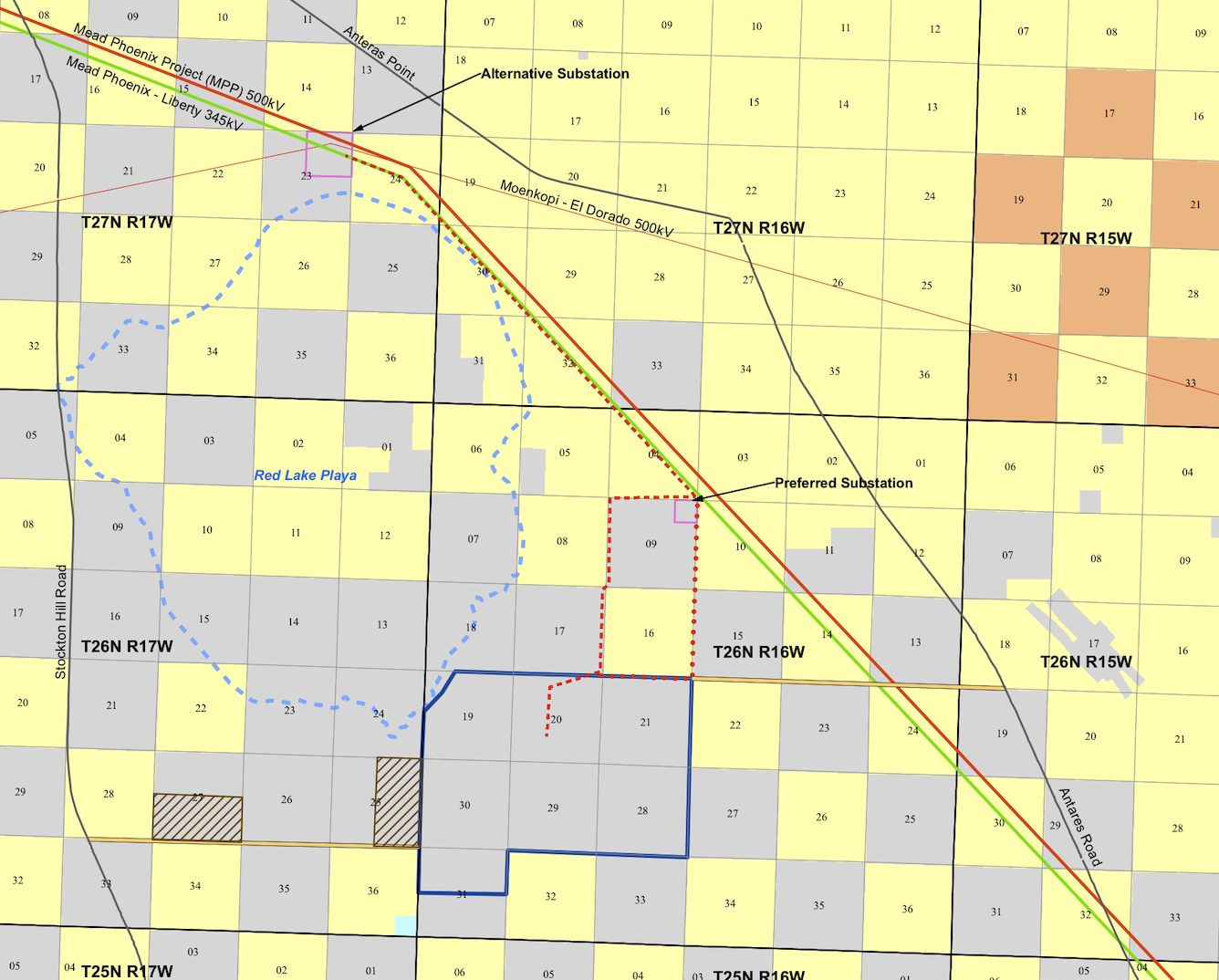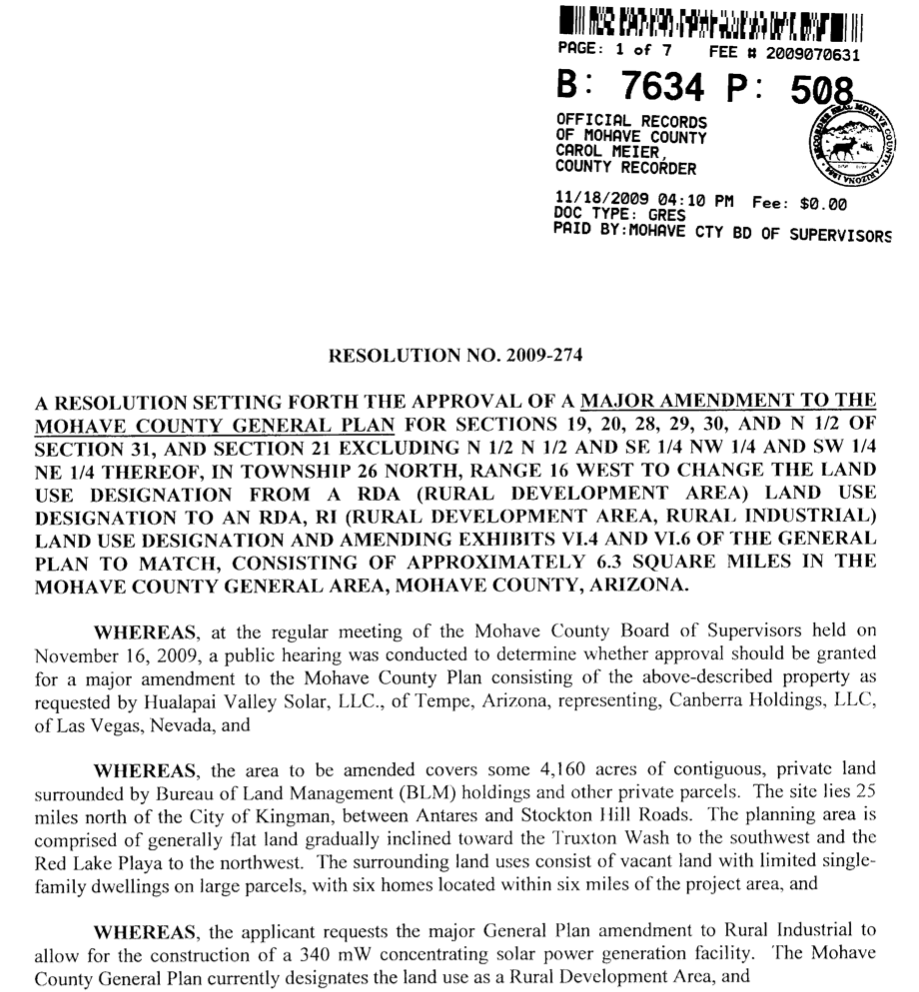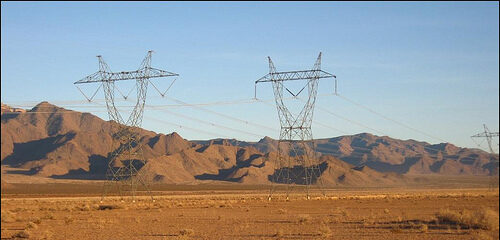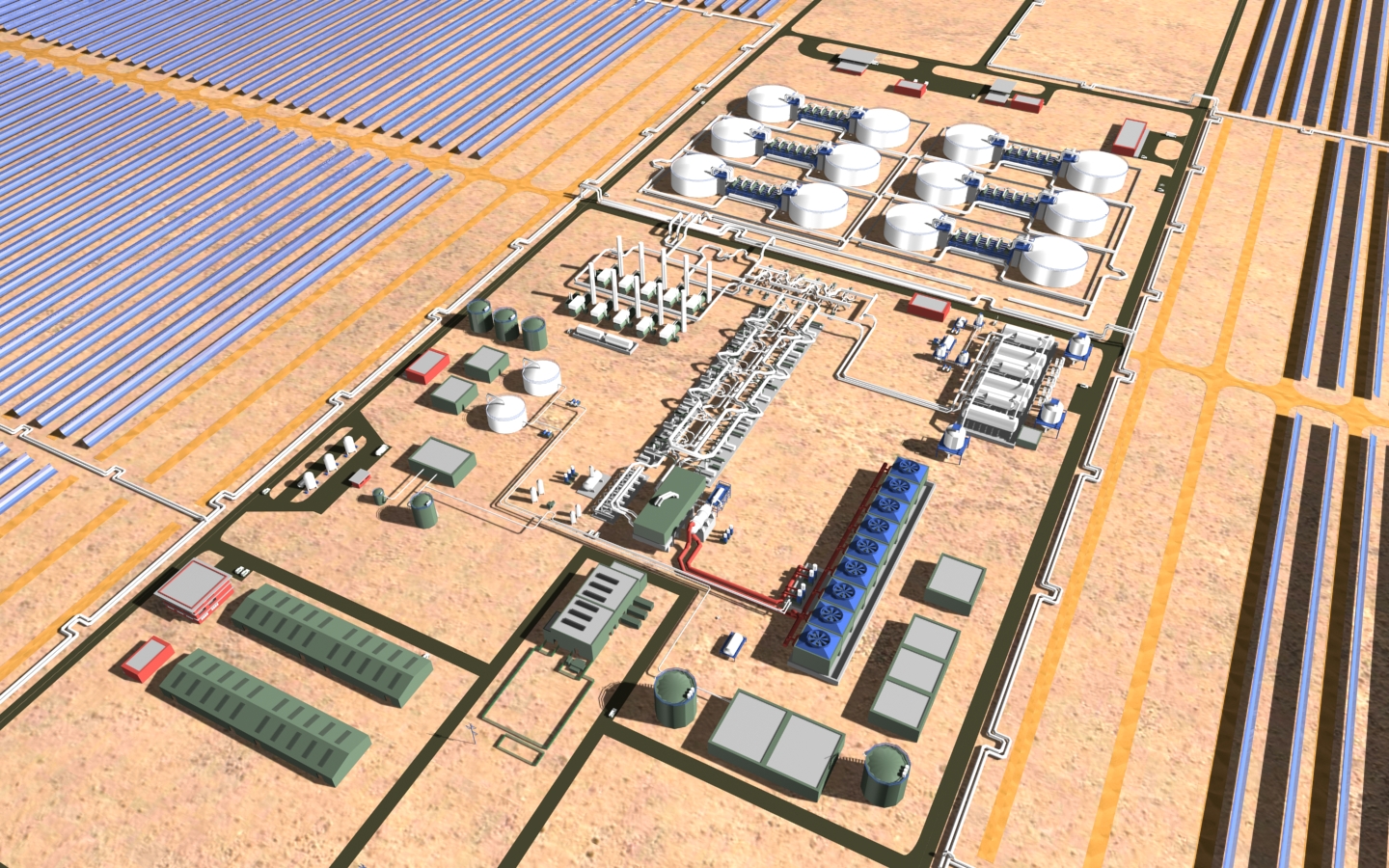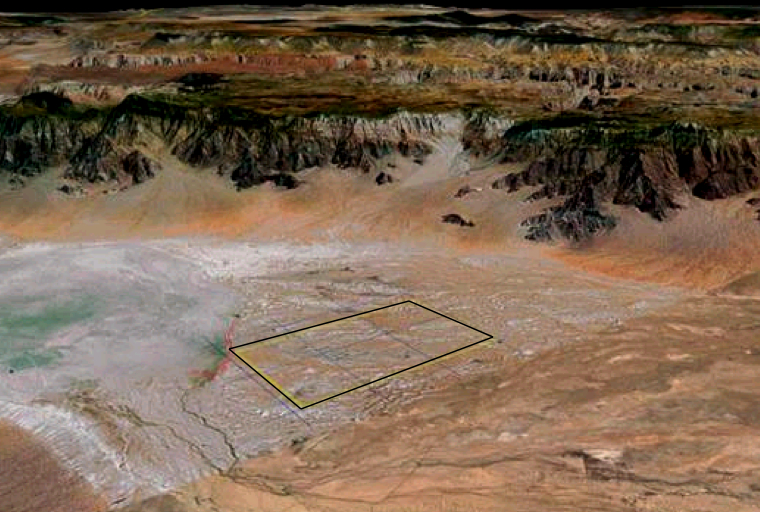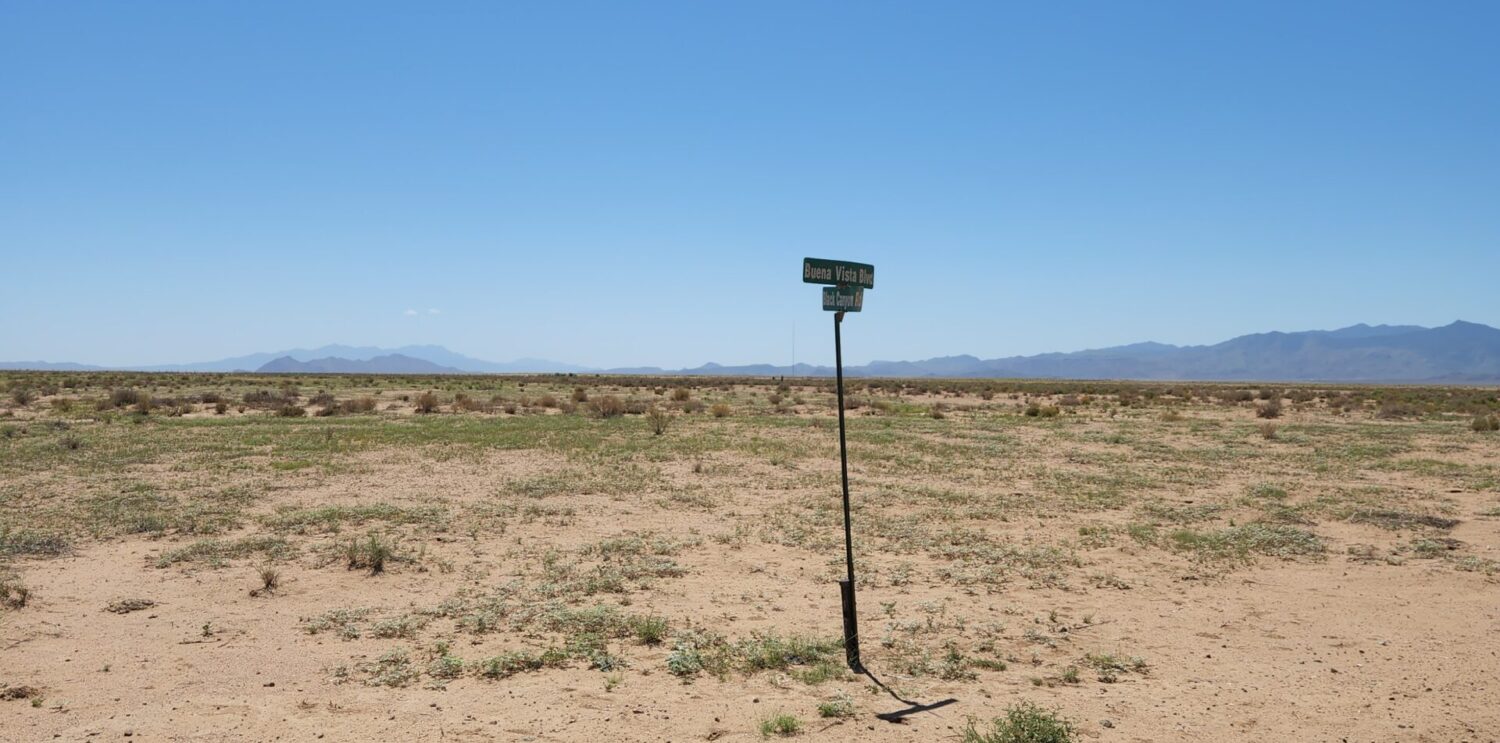Client: Mohave Sun Power /
Location: Mohave County, Arizona /
Services: greenfield development /
The Hualapai Valley Solar Project was an ambitious renewable energy initiative first proposed in 2008. The project aimed to construct a 340 MW concentrating solar power (CSP) plant in Mohave County, Arizona, approximately 27 miles north of Kingman and 100 miles southeast of Las Vegas. Developed by Mohave Sun Power LLC, the facility was designed to utilize solar trough technology and feature 8 hours of thermal energy storage capacity, making it one of the largest solar power plants in the world at the time.
One of the most innovative aspects of the project was its planned use of treated wastewater for cooling and cleaning purposes. Mohave Sun Power worked with the City of Kingman to secure a commitment for providing treated wastewater from the city’s sewage treatment plant. This approach aimed to address concerns about water usage in the arid region and reduce the project’s environmental impact. Initially, the project had planned to use groundwater, but this was changed due to environmental concerns and regulatory requirements.
The Hualapai Valley Solar Project received support from local officials, including Kingman’s Mayor John Salem and City Council member Robin Gordon, who viewed it as a better use of the land compared to previous residential development plans. The project was expected to create approximately 1,500 jobs during construction and employ around 100 permanent workers once operational. It was estimated to cost more than $2 billion and was seeking financial assistance under the US Department of Energy Loan Guarantee Program.
The proposed plant was to be constructed on 4,000 acres of private land. The project developers completed the preliminary design phase in the fourth quarter of 2009, followed by the detailed engineering design in 2010. The power generated from the plant was intended for use by utilities in Arizona, California and Nevada, helping these states meet their renewable energy requirements.
In terms of technology, the plant was designed to use parabolic-shaped mirrors or troughs to concentrate solar energy, heating a heat transfer fluid (HTF) that would then be used to generate steam and produce electricity. The thermal energy storage system, using molten salts, would allow the plant to continue generating electricity even when the sun wasn’t shining.
The project made significant progress in its planning and approval stages during 2008-2009. As of early 2010, it had received:
- Unanimous land use approval from Mohave County’s Board of Supervisors and Planning & Zoning Commission
- An MOU with City of Kingman to purchase effluent
- An MOUs with labor unions in both Arizona & Nevada
- An MOU with Hualapai Nation for cooperative development
- Approval for a Certificate of Environmental Compatibility (CEC) from the Arizona Corporation Commission
- A draft NEPA Environmental Impact Study, led by WAPA and BLM
- A System Impact Study (SIS) for grid interconnection, which showed that no system upgrades were necessary
- A conditional DOE Loan Guarantee of up to $500 million
- Shortlist status for a 30-year fixed-price PPA with NV Energy.
Despite the initial enthusiasm and progress, the Hualapai Valley Solar Project faced challenges in the following years. While it had support from local officials and was seen as a promising development for renewable energy in the region, concerns about water usage and environmental impacts persisted. The project ultimately did not move forward as originally envisioned, highlighting the complexities involved in developing large-scale renewable energy projects in arid regions.
